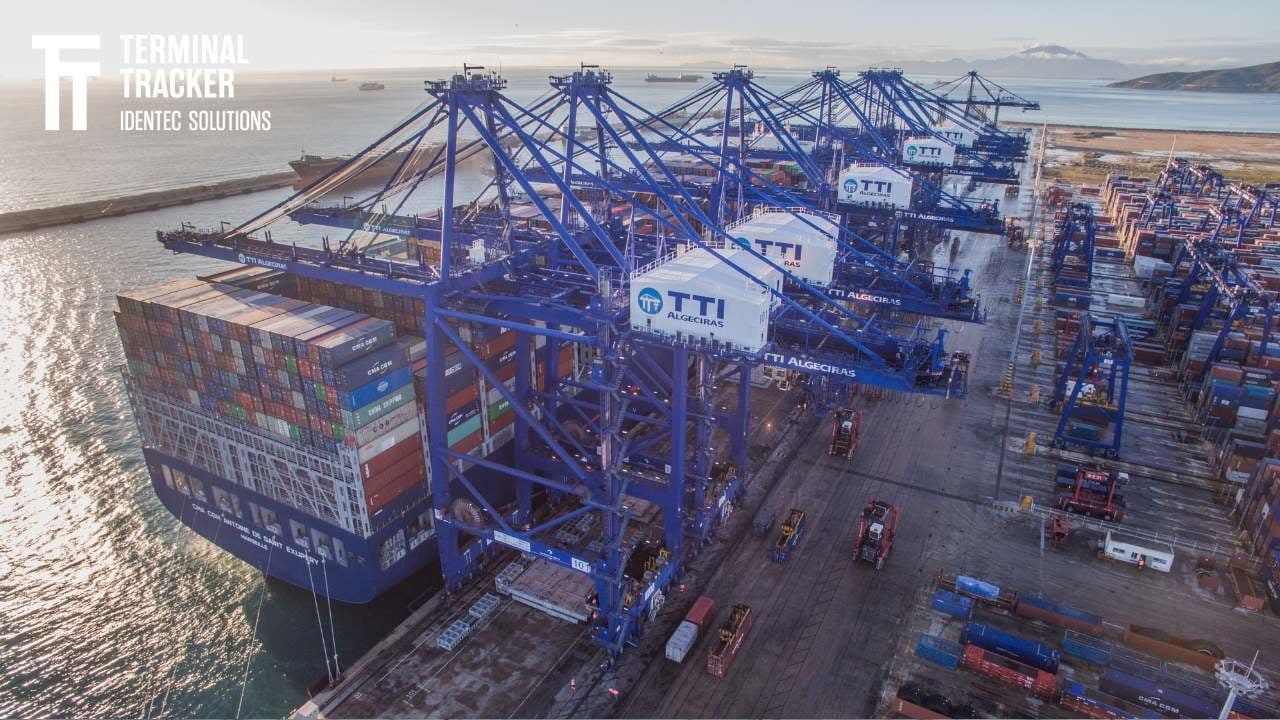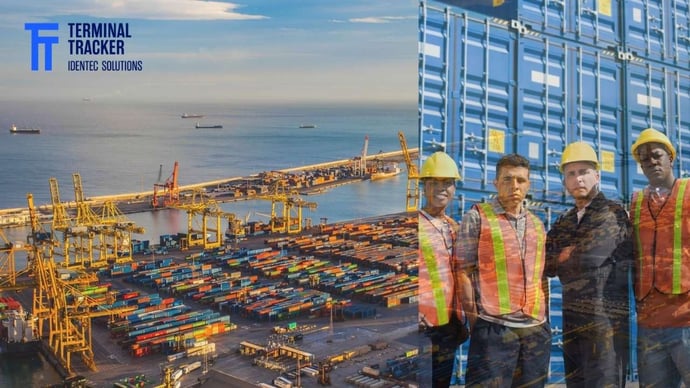Container Yard Operations at TTI Algeciras
| Written by Mark Buzinkay

No video selected
Select a video type in the sidebar.
“The first time I arrived at the construction site, I saw a landscape like a desert. We had to cross it by car, like the Paris-Dakar rally, and I thought this is a big challenge. Almost impossible. To get the first semi-automated container terminal port in the Mediterranean operational in only 6 months.”
It was December 2009 when Miguel Ángel Sánchez first set foot on what would later become TTI Algeciras. At that time, Miguel Ángel was responsible for implementing and running the future Terminal Operating System (TOS). The main building was not in place yet; the teams worked in improvised shacks. Basically, a textbook greenfield operation. But there was something that made Miguel Ángel very confident that they would not miss their target: the commitment of his entire team. A unified crew of professionals from the local workforce, the Korean investors, and an international group of suppliers dedicated to accomplishing big things. He considered them all family.
“Systems control, but you monitor”
The arrival date of the first vessel came closer, and the pressure to be ready grew day by day. TTI Algeciras was not only an important project for the owners and the management, but for the entire region, which aspired to become an important hub for import and export at this strategic region for international shipping. For Miguel Ángel Sánchez, the challenge was not only to kick-start a TOS successfully, but also to connect the essential parts of the semi-automated processes to handle container yard operations. How would the specialized software of cranes and vehicle positioning work seamlessly with the TOS? As it was the first of its kind in the region, it was also for almost everybody in the team – a project of a lifetime.
Maybe the most important step for the entire team was to change their mindset. Coming from conventional container terminals or other IT sectors, everyone in the yard was used to being an operator and free to decide the next steps on the job list. Not so in a semi-automated terminal. Shuttle carriers, trucks and automated stacking cranes (ASC) may still be manned by humans, but people are drivers now, not operators – now they are executing job orders the TOS assigned them. In the end, the TOS is much more efficient in planning the overall succession of jobs than a single driver. According to Miguel Ángel, this is the true change in an operator’s mindset: “Let the system work. Systems control, but you monitor.”
Terminal Tracker: The missing link in container yard operations
It is not as Orwellian a scenario as it may sound, Miguel Ángel assures. You still perform the activity, but at the same time, you are assisted by the TOS on how to do it. And: there are always exceptions which must be handled by the workforce. New sort of jobs that have not been planned or foreseen in the initial operational model - like cleaning containers as a new service to shipping lines. But most of the processes are defined and later configured in the system, which will follow these rules to optimize the productivity of container handling.
“And this is exactly why we chose Terminal Tracker. In our operational model, we needed to close the missing link between the automated processes in the yard and the non-automated, driver-related jobs. That was crucial. Without Terminal Tracker, we would not have been able to be ready for our first vessel, which arrived on time and was served successfully. The first of many to come”, says Miguel Ángel.
The core functionality of Terminal Tracker for TTIA was the Position Detecting System (PDS). It enabled the TOS to align the positions of carriers and cranes for precise transfer of containers, and to control the movement of vehicles, and therefore containers in the yard. It’s all about traceability. No more lost containers, no more idle time of cranes due to search activities.
“But there are two important aspects in this”, says Miguel Ángel, “precision and timely-response. First, the accuracy of the positioning must be excellent. There is not much leeway. It is a learning process for every terminal because of the individual circumstances. We reached the needed precision after a few months of testing, which is a very short period for a project of this scale. Second, before you release a container, you want to be sure, that this is the right container on the right carrier. Terminal Tracker controls the twist-lock, and this is essential. Your TOS will cross-check and approve the manoeuvre. If they don’t fit, the container won’t be released. Normally, this cross-check takes about two seconds, but you can’t let your drivers wait because, with every move, this accumulates. We had to find solutions, and the team from IDENTEC SOLUTIONS delivered. Now, there is no longer any waiting time for the drivers.”
Continuous process improvement to become one of the best
PDS and the twist-lock control are not the only features TTI Algeciras uses from the wide variety of Terminal Tracker functionality available. Real-time monitoring of vehicles in the yard and fuel monitoring are also used widely. The latter for the last three years.
“We always wanted this feature, but due to the tight schedule to get operations-ready in the summer of 2010, we had to focus on the core functions. But today, fuel monitoring is enabling us to optimize the usage of our vehicles. There are no more pit stops during a shift. Again, this cuts down the idle time of cranes and improves the productivity of the entire terminal”, says Miguel Ángel, who is Head of IT at TTIA since 2011.
The focus on continuous improvement is a core principle of the work of the entire team at TTIA and the reason for using Terminal Tracker for yard optimization. Terminal Tracker provides the data which is necessary for optimizing your processes, freeing you to then decide what improvement project to focus on next. At TTIA, the average amount of moves per hour is 28, a value that ranks them among the best: in 2010, the Container Port Performance Index listed them amongst the top 10 terminals worldwide and the only one in Europe to achieve this level of performance.
“Continuous process improvement is at the heart of our thinking. It is accomplished by your workforce, your systems and technologies, but also focusing on your customer goals to achieve the best results. What you want is performance and safety, but above all, it is reliability for your customer that counts. Only when you solve your bottlenecks, one by one, will you stabilize your processes and make them reliable”, says Miguel Ángel.
This may be true for all industries, customers want robust suppliers that help them to achieve their goals. With this in mind, the team at TTIA is now ready to take the next step with IDENTEC SOLUTIONS: to tackle the management of refrigerated containers.
About TTI Algeciras
Located in southern Spain, at a strategic point in the Strait of Gibraltar, TTI Algeciras is one of two container terminals in the bay of the Port of Algeciras. It was the first semi-automated terminal in Southern Europe and the Mediterranean and began operations in May 2010 and can handle up to 1.6 million TEU annually.
The terminal has an area of 300,119 sqm, two quays totalling 1,400 meters in length and state-of-the-art equipment, including 8 ship-to-shore cranes and 32 automatic stacking cranes. The terminal has continuously upgraded its facilities, including a project completed in February 2023 to raise five ship-to-shore cranes to accommodate MalaccaMax vessels. In April 2024, the terminal expanded its reefer container capacity to 1,518 slots, further improving its capabilities in handling special cargo. (1)
Learn more about port automation from our wide selection of articles and whitepapers!
Glossary
A greenfield operation refers to the construction and development of a new terminal on a previously undeveloped site. This approach allows for optimal design and implementation of modern technologies and layouts from the ground up, without the constraints of existing infrastructure. Greenfield projects offer the opportunity to incorporate the latest automation systems, efficient layouts, and sustainable practices, potentially leading to higher operational efficiency and environmental performance. (2)
A Position Detection System (PDS) is a computerized system that tracks the real-time location of containers and handling equipment. It uses technologies like GNSS, RFID, or optical recognition to accurately determine positions within the terminal. PDS enhances operational efficiency by automating container tracking, reducing human error, and providing precise location data to the Terminal Operating System (TOS). This improves inventory accuracy, optimizes equipment allocation, and streamlines overall port operations. (3)
Sources:
(1) https://www.ttialgeciras.com/
(2) Port Planning and Development by Asaf Ashar, Springer, 2022
(3) Container Terminal Automation Technologies by Michael Rodriguez, Springer, 2023
Note: This article was updated on the 27th of January 2025

Author
Mark Buzinkay, Head of Marketing
Mark Buzinkay holds a PhD in Virtual Anthropology, a Master in Business Administration (Telecommunications Mgmt), a Master of Science in Information Management and a Master of Arts in History, Sociology and Philosophy. Mark spent most of his professional career developing and creating business ideas - from a marketing, organisational and process point of view. He is fascinated by the digital transformation of industries, especially manufacturing and logistics. Mark writes mainly about Industry 4.0, maritime logistics, process and change management, innovations onshore and offshore, and the digital transformation in general.
Talk to an Expert
Fill out the form below and one of our experts will be in touch. Alternatively, visit our contact page.



